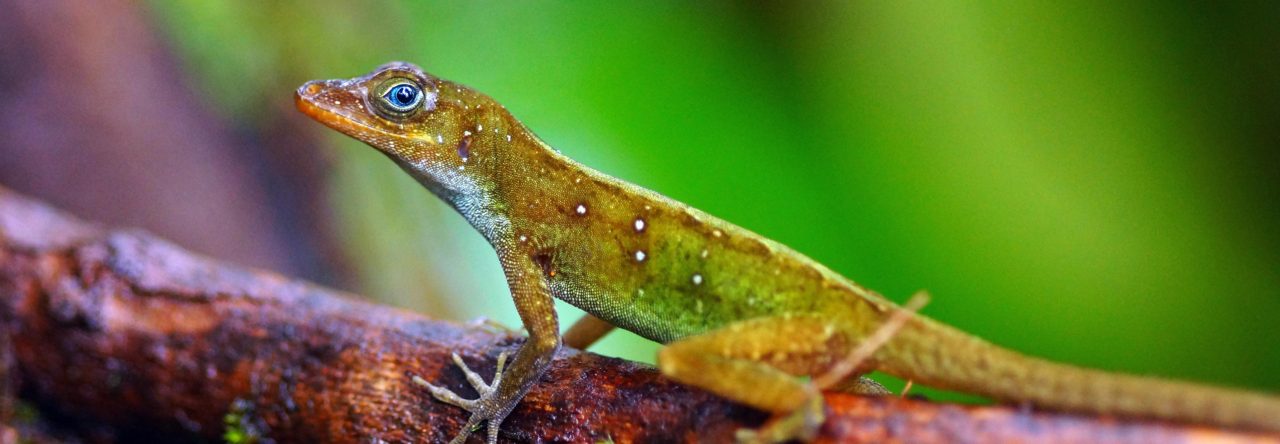
Anolis marmoratus from Guadeloupe. Photo from http://www.karibische-anolis.de/
It was a colorful morning here in Ottawa. First, Julienne Ng reported on her work on the causes and consequences of dewlap color evolution in Anolis distichus in Hispaniola. This species is renowned for the variety of dewlap colors–primarily whites, yellows, and oranges, but also red–displayed by populations throughout the island, and a phylogeographic analysis indicates that different dewlap colors have evolved multiple times. Julienne demonstrated that a correlation exists between environmental variables (e.g., precipitation) and dewlap color and brightness; these variables explained much more of the variation than did geographic distance separating populations or the degree of genetic differentiation. She then asked whether differences in dewlap color serve to reproductively isolate populations. She tested this hypothesis by sampling four transects across areas whether dewlap color changes over a short distance. She found that in one transect, the two populations differing in dewlap color were highly differentiated genetically; in the other three cases, by contrast, the populations were not at all differentiated. This finding is potentially important, as dewlap color is often used to describe different species; the results indicate that populations with different dewlap colors may not be strongly isolated genetically.
Later in the morning, Chris Schneider reported on studies of the genetic determinants of color in the wildly variable Guadeloupean species, Anolis marmoratus. This species exhibits so much variation that 12 subspecies have been described from Guadeloupe and nearby islands. By illumina sequencing, Schneider has found 250 fixed differences between populations differing in color–one with red heads, the other with blue. Preliminary analysis suggests that at least 60 protein-coding genes are involved. This work is a promising first step in identifying the genes underlying color differences in anoles.
- Evolution in Real Time on Lizard Island - March 23, 2025
- Spider Snags Adult Anolis osa - March 22, 2025
- An Homage to the Green Anoles of New Orleans - March 21, 2025


3 Pingbacks